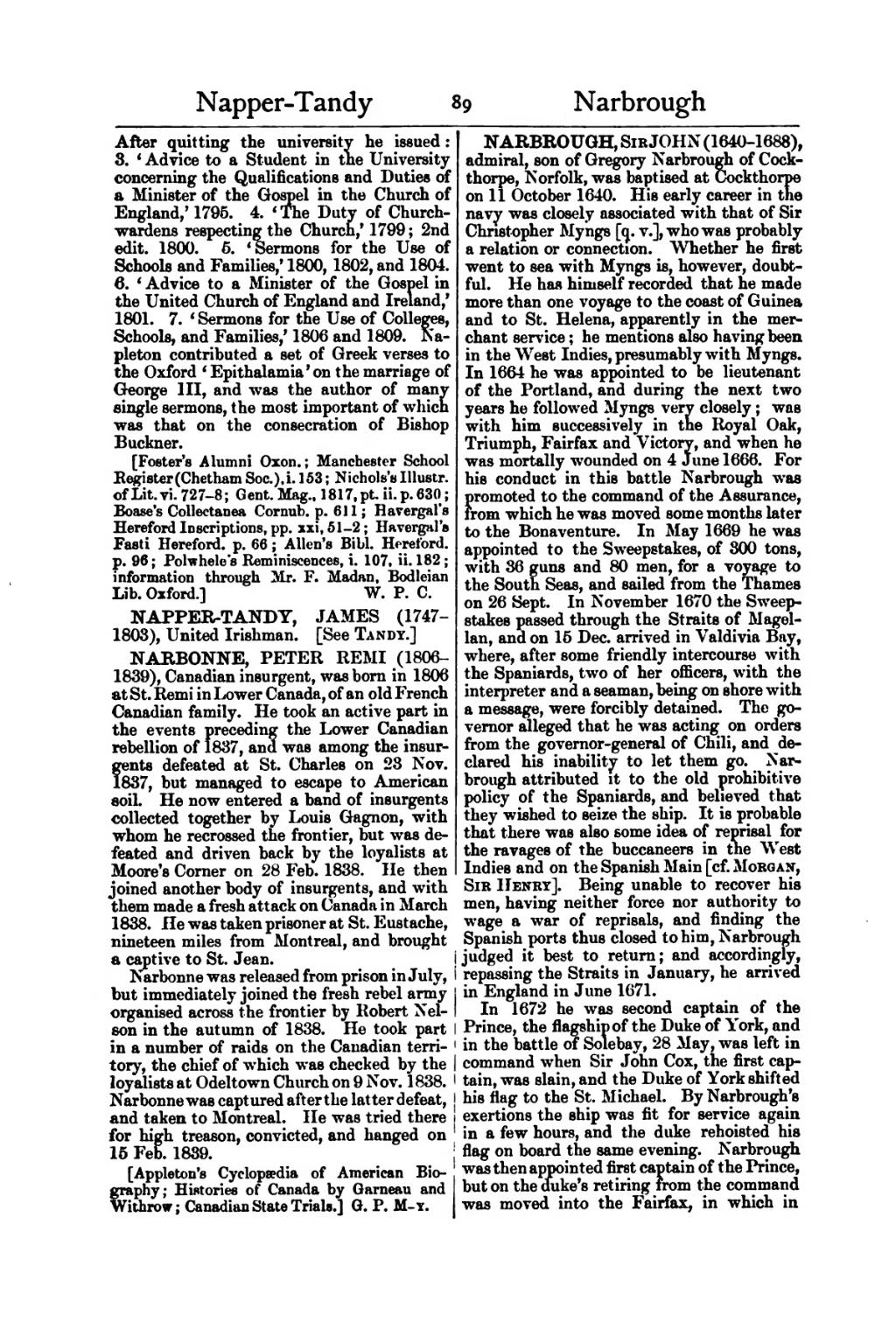After quitting the university he issued: 3. ‘Advice to a Student in the University concerning the Qualifications and Duties of a Minister of the Gospel in the Church of England,’ 1795. 4. ‘The Duty of Churchwardens respecting the Church,’ 1799; 2nd edit. 1800. 5. ‘Sermons for the Use of Schools and Families,’ 1800, 1802, and 1804. 6. ‘Advice to a Minister of the Gospel in the United Church of England and Ireland,’ 1801. 7. ‘Sermons for the Use of Colleges, Schools, and Families,’ 1806 and 1809. Napleton contributed a set of Greek verses to the Oxford ‘Epithalamia’ on the marriage of George III, and was the author of many single sermons, the most important of which was that on the consecration of Bishop Buckner.
[Foster's Alumni Oxon.; Manchester School Register (Chetham Soc.), i. 153; Nichols's Illustr. of Lit. vi. 727–8; Gent. Mag., 1817, pt. ii. p. 630; Boase's Collectanea Cornub. p. 611; Havergal's Hereford Inscriptions, pp. xxi, 51–2; Havergal's Fasti Hereford. p. 66; Allen's Bibl. Hereford. p. 96; Polwhele's Reminiscences, i. 107, ii. 182; information through Mr. F. Madan, Bodleian Lib. Oxford.]
NAPPER-TANDY, JAMES (1747–1803), United Irishman. [See Tandy.]
NARBONNE, PETER REMI (1806–1839), Canadian insurgent, was born in 1806 at St. Remi in Lower Canada, of an old French Canadian family. He took an active part in the events preceding the Lower Canadian rebellion of 1837, and was among the insurgents defeated at St. Charles on 23 Nov. 1837, but managed to escape to American soil. He now entered a band of insurgents collected together by Louis Gagnon, with whom he recrossed the frontier, but was defeated and driven back by the loyalists at Moore's Corner on 28 Feb. 1838. He then joined another body of insurgents, and with them made a fresh attack on Canada in March 1838. He was taken prisoner at St. Eustache, nineteen miles from Montreal, and brought a captive to St. Jean.
Narbonne was released from prison in July, but immediately joined the fresh rebel army organised across the frontier by Robert Nelson in the autumn of 1838. He took part in a number of raids on the Canadian territory, the chief of which was checked by the loyalists at Odeltown Church on 9 Nov. 1838. Narbonne was captured after the latter defeat, and taken to Montreal. He was tried there for high treason, convicted, and hanged on 15 Feb. 1839.
[Appleton's Cyclopædia of American Biography; Histories of Canada by Garneau and Withrow; Canadian State Trials.]
NARBROUGH, Sir JOHN (1640–1688), admiral, son of Gregory Narbrough of Cockthorpe, Norfolk, was baptised at Cockthorpe on 11 October 1640. His early career in the navy was closely associated with that of Sir Christopher Myngs [q. v.], who was probably a relation or connection. Whether he first went to sea with Myngs is, however, doubtful. He has himself recorded that he made more than one voyage to the coast of Guinea and to St. Helena, apparently in the merchant service; he mentions also having been in the West Indies, presumably with Myngs. In 1664 he was appointed to be lieutenant of the Portland, and during the next two years he followed Myngs very closely; was with him successively in the Royal Oak, Triumph, Fairfax and Victory, and when he was mortally wounded on 4 June 1666. For his conduct in this battle Narbrough was promoted to the command of the Assurance, from which he was moved some months later to the Bonaventure. In May 1669 he was appointed to the Sweepstakes, of 300 tons, with 36 guns and 80 men, for a voyage to the South Seas, and sailed from the Thames on 26 Sept. In November 1670 the Sweepstakes passed through the Straits of Magellan, and on 15 Dec. arrived in Valdivia Bay, where, after some friendly intercourse with the Spaniards, two of her officers, with the interpreter and a seaman, being on shore with a message, were forcibly detained. The governor alleged that he was acting on orders from the governor-general of Chili, and declared his inability to let them go. Narbrough attributed it to the old prohibitive policy of the Spaniards, and believed that they wished to seize the ship. It is probable that there was also some idea of reprisal for the ravages of the buccaneers in the West Indies and on the Spanish Main [cf. Morgan, Sir Henry]. Being unable to recover his men, having neither force nor authority to wage a war of reprisals, and finding the Spanish ports thus closed to him, Narbrough judged it best to return; and accordingly, repassing the Straits in January, he arrived in England in June 1671.
In 1672 he was second captain of the Prince, the flagship of the Duke of York, and in the battle of Solebay, 28 May, was left in command when Sir John Cox, the first captain, was slain, and the Duke of York shifted his flag to the St. Michael. By Narbrough's exertions the ship was fit for service again in a few hours, and the duke rehoisted his flag on board the same evening. Narbrough was then appointed first captain of the Prince, but on the duke's retiring from the command was moved into the Fairfax, in which in
